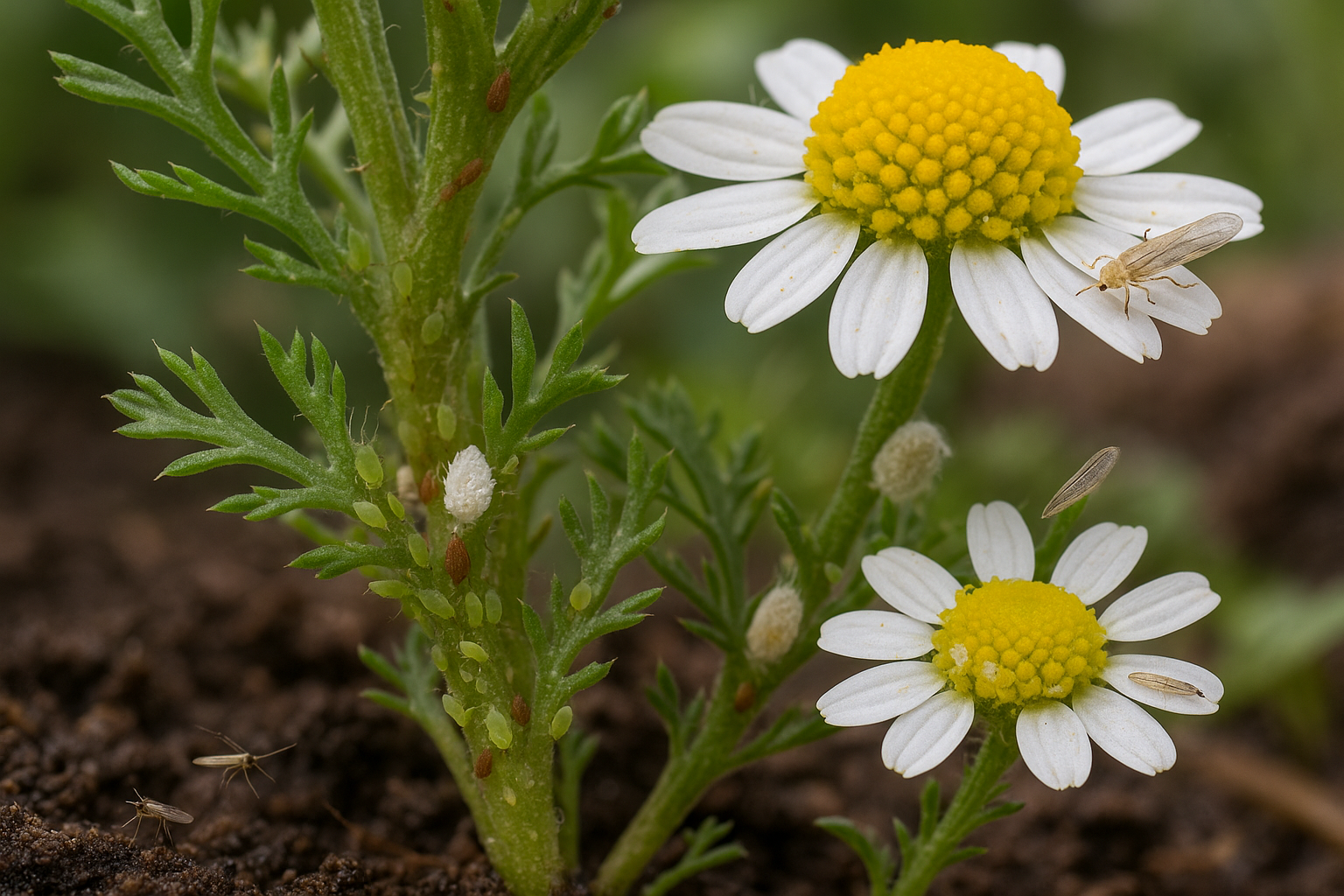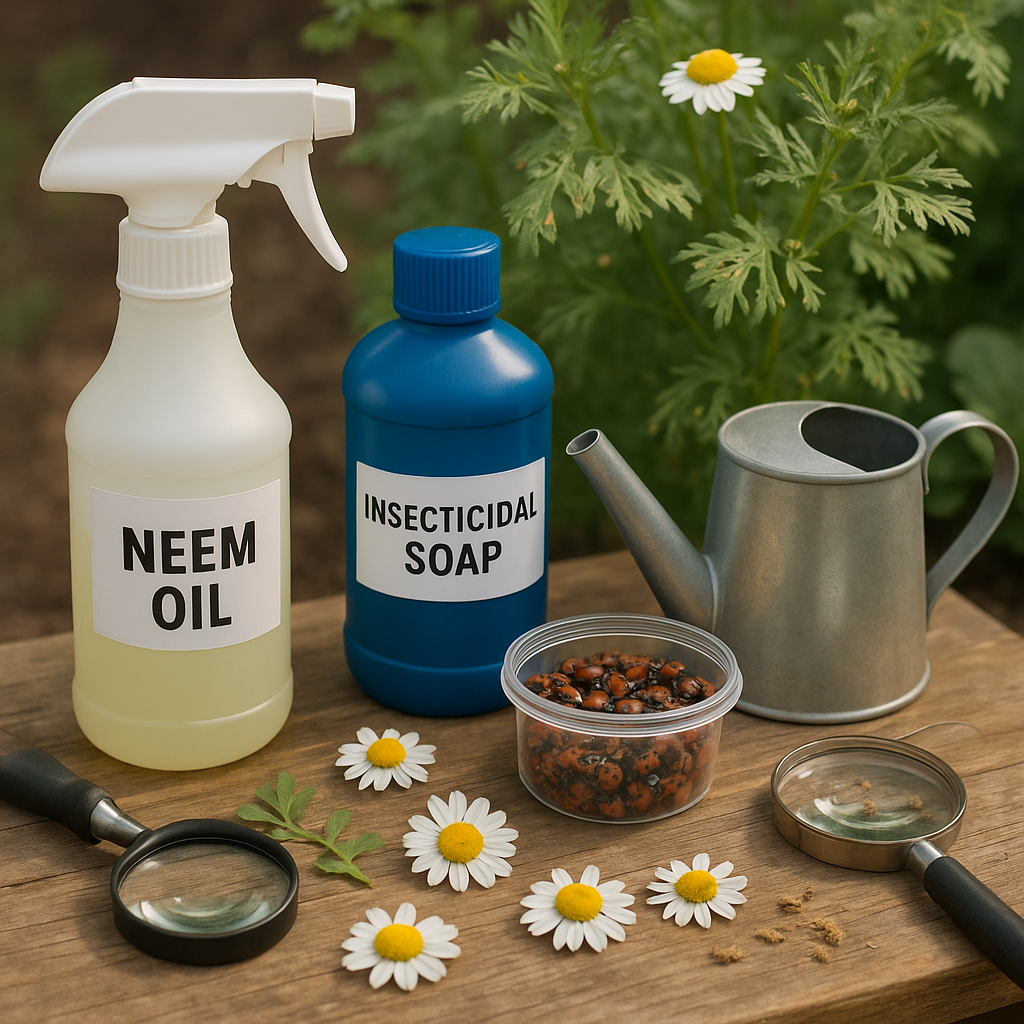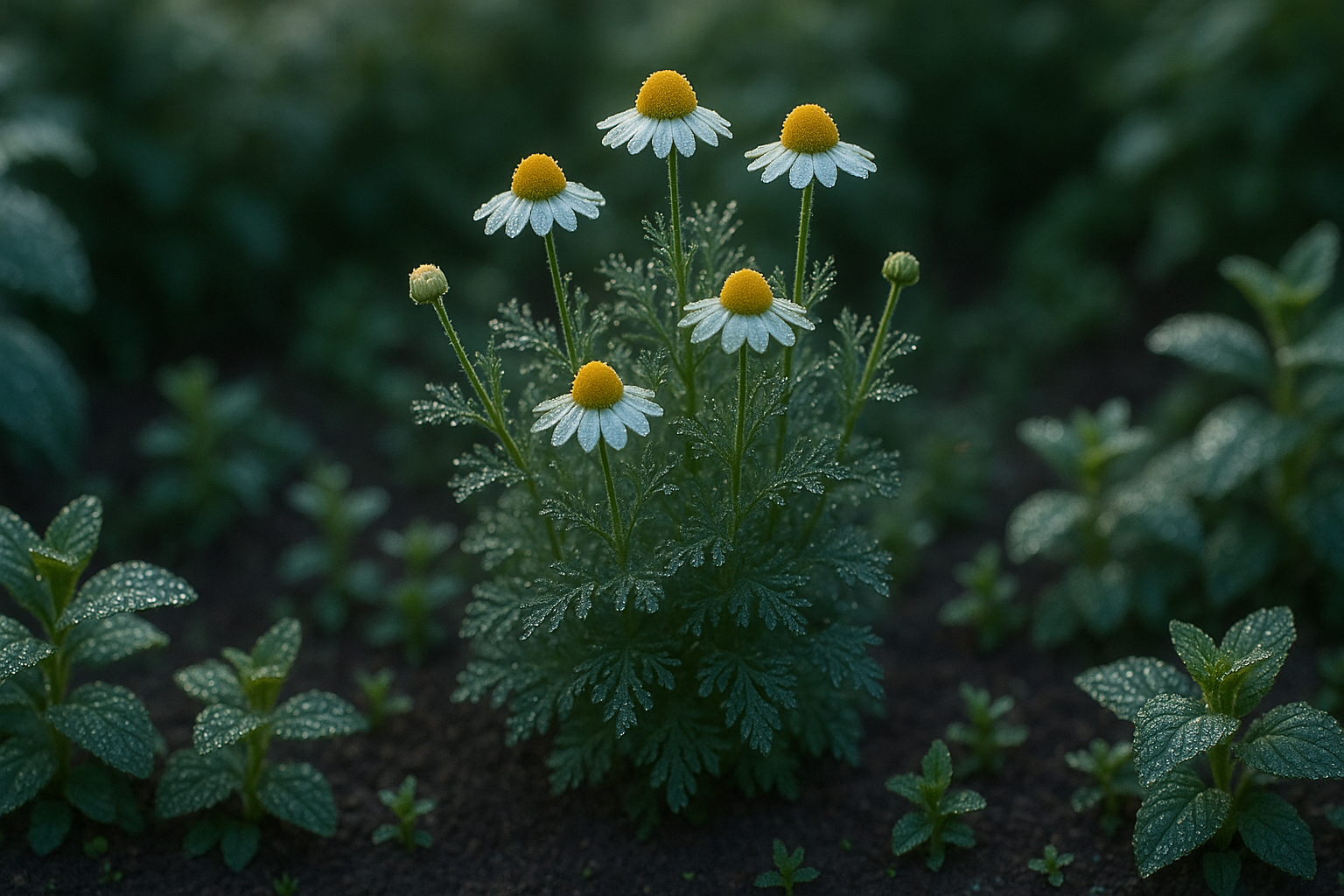Introduction
Chamomile’s gentle blooms and soothing scent make it a beloved choice for both garden beds and homemade herbal remedies. Yet, even this hardy herb isn’t immune to trouble—chamomile pests can quickly turn healthy, thriving plants into a gardener’s headache, affecting both plant health and harvest yields.
If you’ve ever noticed chewed leaves, drooping stems, or unexpected discoloration on your chamomile, pests are likely the culprit. In this blog, we’ll help you confidently identify the most common bugs and critters targeting your plants, from aphids to leaf miners.
You’ll discover practical ways to control infestations using safe, targeted remedies—whether you prefer organic solutions or tried-and-true methods from seasoned gardeners. Plus, we’ll share simple steps you can take to prevent future attacks and keep your chamomile patch flourishing. Ready to learn how to protect your chamomile naturally? Let’s dive in.
Most Common Chamomile Pests (and How to Spot Them)

Chamomile is prized for its soothing blooms, but this delicate herb can quickly fall prey to a range of tiny pests. Aphids are among the most common invaders, recognizable by clusters of pear-shaped, light green or black insects on new growth—watch for curled leaves or sticky honeydew residue as early warning signs.
Spider mites are harder to spot due to their minuscule size, but you’ll notice fine webbing between stems and leaves and yellow speckles marking the feeding points.
Scale insects appear as small, immobile bumps on stems or leaves, often coated in a waxy shell. Their sap-sucking damages plant vigor, causing wilt and yellowing.
Mealybugs look like small spots of cotton clinging to plant crevices, and their sticky secretions can attract mold or ants.
Thrips leave silvery or bronze streaks across petals and foliage, distorting growth and leaving plants looking scraggly; their presence is often confirmed by small black flecks of excrement.
Fungus gnats, though tiny, create bigger issues for roots—keep an eye out for sluggish, drooping plants and check for thin black flies around the soil’s surface.
If left unchecked, all these pests can stunt chamomile’s growth, reduce flowering, or even kill young seedlings. Inspect your plants at least twice a week, especially during warm, humid periods when infestations accelerate.
Use a magnifying glass to spot bugs early, check leaf undersides, and don’t forget to scan soil surfaces for larvae or flying gnats. Early detection and removal—through water sprays, neem oil, or gentle hand-picking—are your best defense against serious pest problems.
How Each Pest Threatens Your Chamomile
Aphids, among the most common chamomile pests, use their piercing-sucking mouthparts to extract sap from leaves and stems—especially targeting young seedlings and tender shoots. This sap loss stunts growth, causes leaf curling, and encourages honeydew buildup, which attracts sooty mold that can coat and damage foliage.
Spider mites, tiny but destructive, feed by piercing plant cells on the undersides of leaves. They leave behind a telltale stippled yellowing and, at worst, webbing that can cloak buds and flowers. Their presence is most damaging during hot, dry periods when chamomile is flowering, a stage critical for tea production.
Leafhoppers are notorious for spreading plant viruses as they feed, often leaving puncture marks on leaves and causing irregular yellowing, foliage distortion, and sometimes early leaf drop.
Thrips, slender pests often unnoticed until damage appears, scrape the surface of petals and leaves, resulting in silvery streaks and distorted flower heads—directly reducing the quality and aromatic potency of harvested blooms.
Root-feeding nematodes attack the underground parts of the plant, particularly seedlings and newly transplanted chamomile, causing root galls or stunted root systems. This hidden damage results in poor plant vigor, wilting, and uneven stands, diminishing both yield and the medicinal properties prized in chamomile tea.
In all cases, severe infestations compromise overall plant health and reduce both the quantity and quality of blooms, leading to a weaker, less flavorful tea harvest.
Safe and Effective Ways to Treat Chamomile Pests

Protecting your chamomile from pests can be simple and safe, especially if you prefer organic gardening. Start with manual removal—regularly check leaves for aphids, caterpillars, or mites, and gently wash them away with a stream of water or pick off larger bugs by hand. This method is very effective for small infestations and poses no risk to your edible blooms.
For more persistent pests, use insecticidal soaps or neem oil sprays. Apply these solutions in the early morning or evening, when pollinators are less active, and repeat every 5-7 days as needed. Be sure to follow product instructions and rinse the plants with clean water after 24 hours to reduce residue before harvesting for tea or culinary use.
Horticultural oils can also be used similarly to smother insect eggs and larvae, but always choose products labeled safe for edible plants. Introducing natural predators, like ladybugs or lacewings, is another eco-friendly way to curb pest populations. Release them in your chamomile patch during the early evening and provide some water nearby to encourage them to stick around.
Only consider stronger chemical controls as a last resort, since these can leave residues, harm beneficial insects, and negatively impact the flavor and safety of your chamomile. Organic approaches not only protect your crop and health but also support a thriving garden ecosystem in the long run.
Preventative Practices for Healthy, Pest-Free Chamomile
Keeping chamomile healthy and pest-free starts with smart, preventative habits in your garden. Regularly inspect your plants, checking under leaves and along stems for early signs of aphids, spider mites, or damage—the sooner you catch issues, the easier they are to fix.
Make sure you space plants properly and trim back any dense foliage to promote good airflow; damp, crowded conditions can invite diseases and allow pests to hide. Chamomile thrives in well-draining soil, so test for healthy drainage and add compost to ensure strong, resilient plants. It’s also important to avoid overwatering, which can lead to root rot and fungal problems.
Companion planting with fragrant herbs like mint, cilantro, or basil can help naturally repel pests; these plants confuse and deter insects, giving chamomile extra protection.
Don’t forget to keep tools clean and routinely clear fallen leaves or spent flowers from the soil surface—removing old plant debris interrupts pest life cycles and lowers infestation risks.
For indoor chamomile, pay special attention to your pots and trays, as fungus gnats and whiteflies are common indoor threats. Set up sticky traps nearby, avoid letting water stand in saucers, and inspect your plants closely every week to catch any trouble before it spreads.
When to Worry
Spotting severe pest problems early can save your plants and prevent heartbreak. Watch for stunted growth, where your plant stops developing or looks much smaller than it should. Large patches of missing leaves or leaves that drop suddenly are red flags, as is the presence of sticky honeydew or black sooty mold—both signs that sap-sucking insects like aphids or scale insects are thriving.
If you notice these symptoms, immediately move affected plants away from healthy ones to stop pests from spreading. Use aggressive treatments such as insecticidal soap, neem oil, or removing heavily infested branches. If home remedies don’t curb the outbreak after a week or two, it might be time to cut your losses and dispose of the plant—better to lose one than risk your whole collection.
When you’re unsure what you’re facing, or if valuable or sentimental plants are at risk, don’t hesitate to consult local extension services or a plant care expert. Their advice can provide tailored solutions and peace of mind.
Conclusion
Dealing with pests on your chamomile plants may seem daunting, but most issues can be managed with regular observation and care. By catching problems early and using gentle, natural methods, you can enjoy a healthy, chemical-free harvest. Remember, a little vigilance goes a long way in maintaining your garden’s well-being.
If you’ve faced any challenges or have questions about pest control, feel free to share your experiences in the comments—we’d love to hear your stories and help each other grow thriving chamomile plants together!
